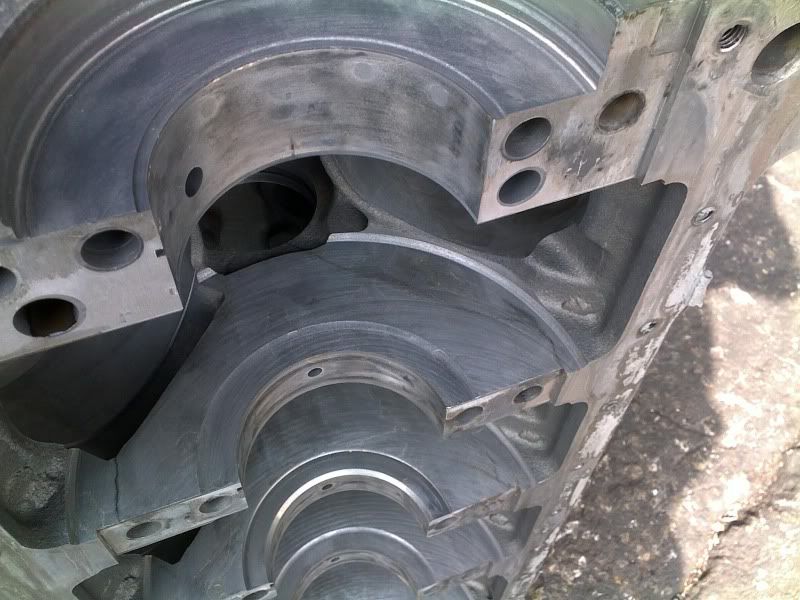great white
Well-Known Member
So, it appears all the 6.5 main cap girdles are of this sort:

where as I've always used (or seen) girdles similar to these on gasser builds:



It seems the 6.5 girdles offered are not very robust, only tying the 3 per side outer studs together. The others I've shown would seem to offer much greater lower end strength and stability.
Why the diff?
Is there limited room in the pan? Or is it the "kick up" at the timing cover, which makes it an odd shape? or the rear seal/cap area?
I would think even a girdle like the "donut" style ones above would offer better stability that the available 6.5 ones, even if not tied into the block skirts/pan rail like the Mopar one above.
I don't think they would do much for the bolt hole cracking, but I would think it would prevent the caps from walking around in the cap register and cracking the web in that area.
Hmm, anyone on Vancouver Island have a trashed 6.5 with the cover and pan on it I could use as a "mule"?
Might try my hand at building a better girdle....
Yeah, i know, that sounds kind of funny doesn't it?


where as I've always used (or seen) girdles similar to these on gasser builds:



It seems the 6.5 girdles offered are not very robust, only tying the 3 per side outer studs together. The others I've shown would seem to offer much greater lower end strength and stability.
Why the diff?
Is there limited room in the pan? Or is it the "kick up" at the timing cover, which makes it an odd shape? or the rear seal/cap area?
I would think even a girdle like the "donut" style ones above would offer better stability that the available 6.5 ones, even if not tied into the block skirts/pan rail like the Mopar one above.
I don't think they would do much for the bolt hole cracking, but I would think it would prevent the caps from walking around in the cap register and cracking the web in that area.
Hmm, anyone on Vancouver Island have a trashed 6.5 with the cover and pan on it I could use as a "mule"?
Might try my hand at building a better girdle....
Yeah, i know, that sounds kind of funny doesn't it?
Last edited:

